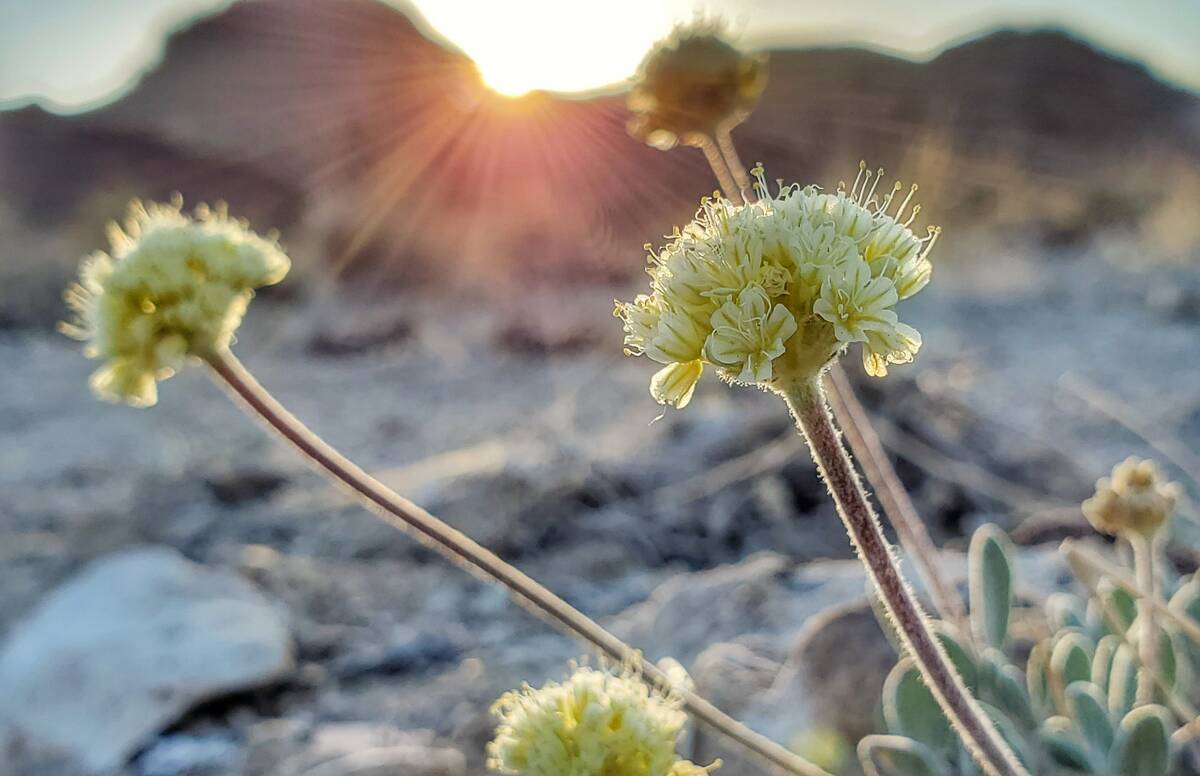
U.S. Fish and Wildlife Service officials announced Tuesday they would protect the rare wildflower Tiehm’s buckwheat under the federal Endangered Species Act, following nearly three years of petitioning and litigation from environmental activists.
The buckwheat plant grows on just 10 acres of public land in the Silver Peak Range in Esmeralda County, and environmentals say a proposed lithium mine could’ve destroyed nearly all its habitat without the federal protections.
In 2019, the Center for Biological Diversity began petitioning federal fish and wildlife officials to protect the buckwheat plant. In 2021, the nonprofit/activism group filed a lawsuit seeking refuge under the Endangered Species Act, which works to preserve imperiled plants and animals.
On Tuesday, federal officials granted that designation.
“I’m thrilled that Tiehm’s buckwheat now has the protections it so desperately needs for survival,” said Patrick Donnelly, Great Basin director at the Center for Biological Diversity. “Lithium is an important part of our renewable energy transition, but it can’t come at the cost of extinction.”
The Australia-based mining company Ioneer has proposed a 1,000-foot deep pit at the Rhyolite Ridge lithium mine about 40 miles south of Tonopah where the buckwheat plant thrives. Ioneer is expected to supply Ford Motor Co. with lithium carbonate from Rhyolite Ridge under a major deal that would allow the U.S. vehicle maker to manufacture cleaner fleets.
Mining company reacts
Ioneer officials told the TTB this week that they anticpated the ruling from federal officials and welcomed the announcement.
“Ioneer fully supports the listing of Tiehm’s buckwheat as an endangered species and critical habitat designation,” Ioneer Managing Director Bernard Rowe said.
The plant’s protection had already been factored into Rhyolite Ridge’s project planning including its design, engineering, operational and environmental considerations, a spokesperson for Ioneer told the TTB in July. The company has reportedly budged $1 million over the next several years to conduct research and implement conservation measures to address risks to the species that are not related to mining activities.
“Ioneer’s ongoing conservation efforts for Tiehm’s buckwheat are aimed at addressing current and future threats to the species, including climate-related threat,” Rowe said this week. “Under the supervision of a full-time botanist [Ioneer] is conducting scientific research to further increase knowledge of the species and is now operating a dedicated greenhouse in Nevada where plants are being successfully grown from seed collected from the known populations.
Ioneer’s mining project and the buckwheat plant should be be able to “succesfully co-exist,” Rowe added.
But Donnely said he was skeptical that Ioneer’s plans would have conserved the buckwheat without the added assurance from these new federal protections.
“Now that the buckwheat is protected, we’ll use the full power of the Endangered Species Act to ensure Ioneer doesn’t harm one hair on a buckwheat’s head,” he said.
In addition to designating Tiehm’s buckwheat as an endangered species, the federal ruling finalized 910 acres of protected critical habitat for the rare plant, which includes all the existing plants and a 500-meter buffer surrounding them.
Contact Editor Brent Schanding at bschanding@pvtimes.com